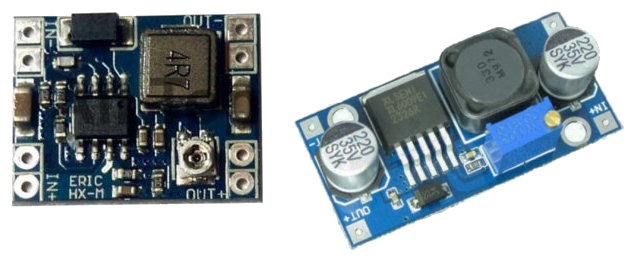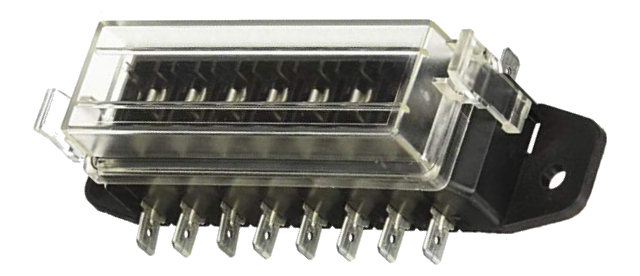
Why have a separate low voltage power network?
We choose to use a 12V dc power network over any other voltage because it is very easy to find components, devices, and electronics that use 12V dc power. There is a huge demand for automotive use, caravan and camping use, boating applications, etc. and a vast array of products available. There are also many devices that use less than 12V and for these we can 'step down' the voltage to meet their needs, very simply and cheaply.
You can put 12V dc into a cable pair but you will not see 12V dc at the other end. Even the shortest of cables introduces a voltage drop, due to the internal resistance of the cable. The trick is to minimise these voltage drops or design around them. Thicker cables have lower internal resistance and thus introduce a smaller voltage drop but, they cost more.
The voltage drop is also dependent on the current being drawn, so we avoid using 12V dc power for really high current devices and applications. The exception is when we can locate the supply very close to the load and any control circuitry. It is possible to predict the voltage drop using a voltage drop calculator.

Many devices require voltages less than 12V and also need a stable (regulated) power supply. Devices like Arduino processors need a stable supply of around 8.5V, to enable the on-board voltage regulator and voltage reference to work correctly. To enable an accurate and stable voltage at the remote end, we are using dc-dc convertors. These are very efficient (typically >95%), cheap and extremely reliable. We have never had one fail yet, even after 10+ years of use. They can be adjusted to provide any desired output voltage such as 9V, 7.5V, 5V, etc. They can also handle fairly high current loads.
These things are tiny and can handle a wide range of input voltages (typically 28V dc or more). They have a fairly low drop-out voltage (typically less than 1.5V). This means the supply voltage must be higher than the desired output voltage. For example: with a 12V power network and a 1V voltage drop along the cables, the highest voltage we could supply to a device would be about 9.5V dc. In practice we like some headroom, so the highest voltage we supply to devices like this is 9V dc.
If we ever decide to upgrade this 12V power network to a higher voltage (e.g. 24V dc), then the use of dc-dc convertors means everything should carry on working without any modifications.
To minimise voltage drops, we are using a high quality automotive cables and have limited our use to five basic cable types:
The cable used depends very much on each application but the above selection allows the best solution (based on cost, performance, etc.). We also use a colour coding system and cable idents, to make it much easier to know what each cable does.
Generally, we try to minimise the number of connections used but where we do make connections we use blade connectors and crimp and solder every one.

For improved safety, we use blade fuses to provide extra protection. Blade fuses are typically used in automotive applications and are readily available in 1A, 2A, 3A, 5A, 7.5A, 10A, 20A and 30A values. There are many types of fuse boxes but this is an example of one we use in our smart home.
One of the great things about LED lighting is that it uses little power and all of it is basically low voltage. When you connect an LED light bulb to a 120 or 220V ac power supply, the electronics inside it are converting this high ac voltage to a low dc voltage, to power the LEDs within the bulb. Often this is done very inefficiently and in cheaper bulbs this driver circuit is often the weakest link, resulting in premature failure.
You can also buy 12V LED light bulbs and there are many bulbs available for use in vehicles and caravans. This makes it super easy to add good looking, 12V lighting, connect it to a 12V power network and also control it intelligently. Most 12V LED bulbs are quite happy to work with voltages as low as 9V without significant reduction in light output, so you don't need to worry about voltage drops over long cables.
If the voltage drops are really an issue, it is very easy to make you own DIY lighting and connect it to a 12V power network.
One of the great things about this approach is that it makes it very easy to measure just how much power each device is using.
Using a 12V power network makes you think long and hard about devices and other things connected to it and how much power they use. This encourages efficiency and ensures the UPS can keep things up and running for much longer during a power outage. It also encourages you to think about what are the 'mission critical' elements of your smart home, that need to be kept running during a power outage.